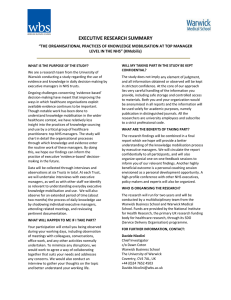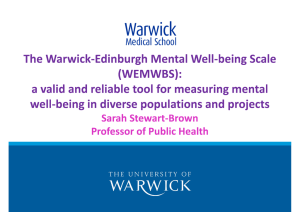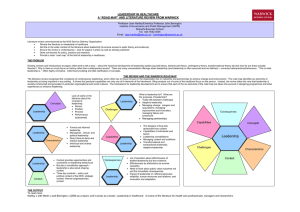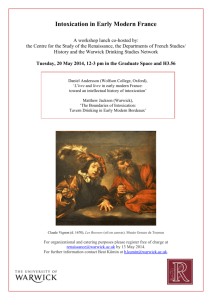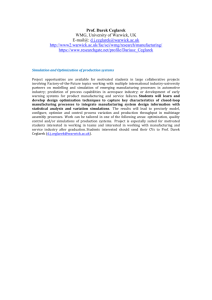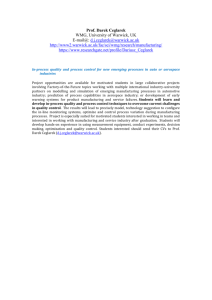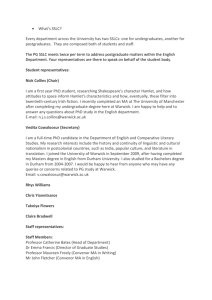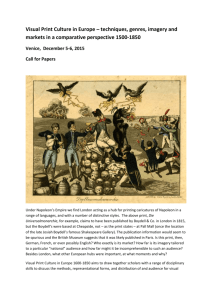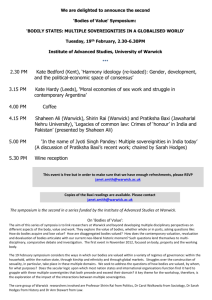The Role of Digital Communication in Patient
advertisement
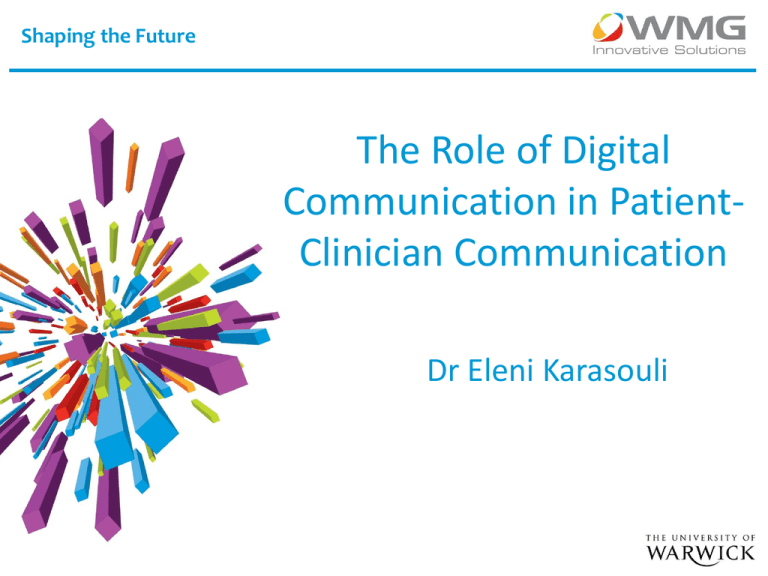
Shaping the Future The Role of Digital Communication in PatientClinician Communication Dr Eleni Karasouli Partnership between the NHS, Warwick Manufacturing Group and Warwick Medical School Aims to improve people’s health and wellbeing through the development, evaluation and use of innovative digital technologies and services. Our model of research-led innovation in healthcare entails identifying real problems, understanding them by identifying relevant theories, selecting appropriate technologies and developing new solutions where necessary. Overview Examples of current practice Possible ICT uses Research evidence Benefits Challenges Questions that need addressing Growing role of ICT in daily interactions What is currently happening in healthcare… some practice examples Videoconference Email English prison service: Teleconsultations save £2,500 per case by not physically transferring patients to hospitals. NHS Derbyshire primary care trust: Online consultations release over £92 per person. Text messages Out of hours stroke care: 6 acute trusts and 7 PCTs across Lancashire and Cumbria expect savings of £1.8 million annually. University Hospital of North Staffordshire: proposal submitted for Skype consultations in attempt to tackle waiting times. Patient portals Social media What about research evidence… The LYNC study – Lead Investigators: Profs Frances Griffiths (University of Warwick) & Jackie Sturt (Kings College London) Aims: – 1) evaluate the impacts of digital clinical communications for young people living with long term conditions, – 2) analyse critically the provision and use of digital clinical communications by NHS specialist care providers. For whom? Where? When? What works? Why? What are the ethical and safety issues? What is the impact? How much does it cost? Rationale Young people with long term conditions tend to disengage with services Disengagement is more likely to lead to poor health outcomes Service related reasons for disengagement include poor patient-clinician communication, inflexible access to clinicians and information, lack of continuity Young people are asking to communicate with health care staff digitally Methods 20 specialist clinics across UK (e.g. diabetes, mental health, cancer) A range of conditions A range of communication tools Several studies: – observation, – interviews with staff, patients and carers, – examination of clinic policy and guidelines Initial findings Young people are positive about the convenience of using text messages to communicate with their clinician Text messages can be read anytime, anywhere and can be reread so the patient doesn’t have to memorise what was said Some young people suggest that keeping in contact with clinicians via text message can improve clinicianpatient relationships, by increasing the frequency, and reducing the formality of their communication. Variable concern about security and confidentiality Some older clinicians will need training Possible ICT uses Monitoring health conditions Adjustment of medication Discharge after routine surgery Providing test results The benefits are… Reduction in face-to-face appointments Service engagement & reduce did not attends (DNAs) Improve patient satisfaction Reduce inequalities, e.g. people who cannot take time off work, live in remote areas Positive patient outcomes such as improved selfcare Financial benefits Challenges to be aware of… Targeting young or IT savvy patients Not all forms of communication can be replaced Doctor-patient relationship may need to be established What about confidentiality, legal context, health policy issues, and technical conditions? Concluding remarks Digital communication is still rare, but interest is high and likely to increase. Already a vast number of benefits Are these technologies and systems safe and effective when applied across a variety of healthcare settings? How to design these systems and target their use, to make sure that society obtains the most benefit? What policy and procedural changes are needed for gaining benefit and limiting harm? Thank you e.karasouli@warwick.ac.uk
